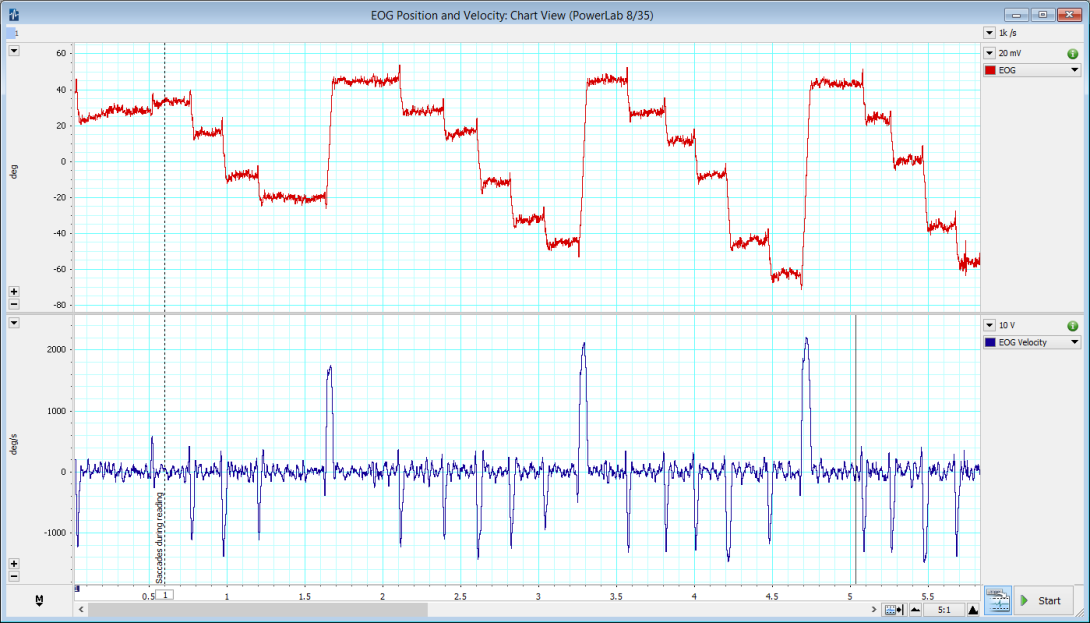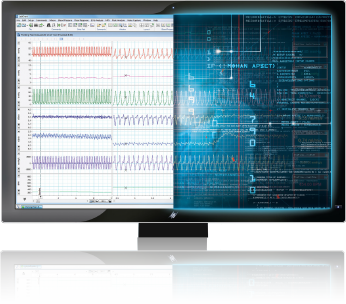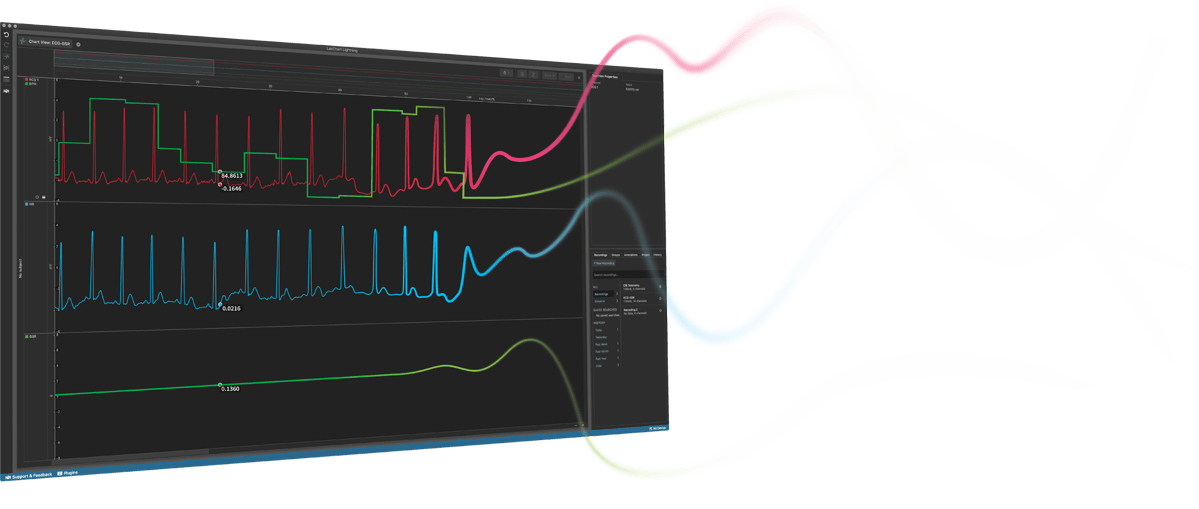EOG
Eye movements are controlled by the six extrinsic muscles of each eye; these muscles allow the eyes to track moving objects or fixate on stationary object while the head moves.
Eye movements can be recorded using electrodes placed on the skin near the eyes. This kind of recording is called an electrooculogram (EOG).



All your analysis in one place
LabChart software is designed specifically for life science data and provides up to 32 channels for data display and analysis options that are powerful and easy to use. With auto-recognition of ADI and LabChart Compatible hardware, multi-window views, one touch recording, simultaneous recording from multiple devices, specialized preconfigured settings, easy sharing options and an interface that can be customized to show only the features you want to use.
Features and Add-Ons
Additional acquisition and analysis options to support your EOG analysis:


